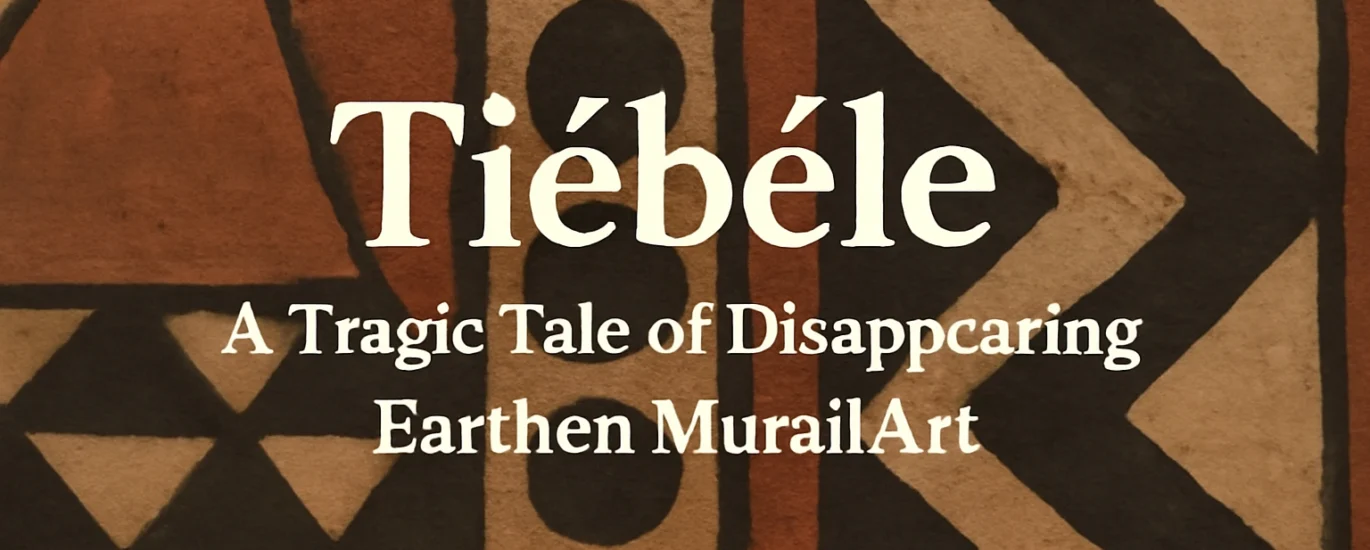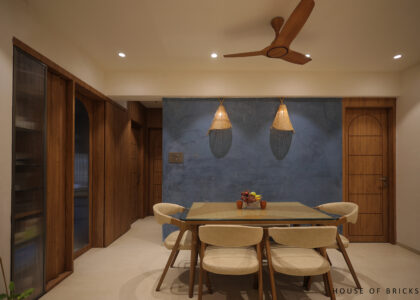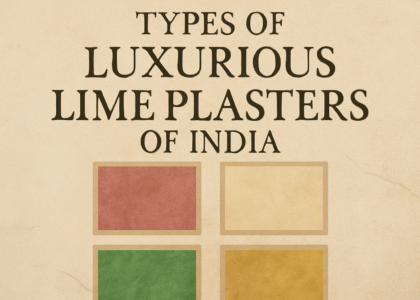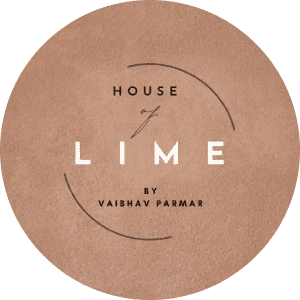Hidden in the heart of Burkina Faso lies Tiébélé — a small Kassena village once celebrated for its breathtaking mural architecture. Every wall, every courtyard, and every facade told a story. Women of the Kassena tribe used natural earth pigments to paint intricate geometric patterns on their clay homes, transforming humble dwellings into living art.
But today, this heritage is fading. The earthen murals that once defined Tiébélé’s identity are slowly vanishing — eroded by modernization, climate, and neglect. The story of Tiébélé is not just about loss; it’s also a reminder of how fragile traditional building wisdom can be, and why the world must look back to sustainable materials like lime, clay, and earth to shape the future of design.
At House of Lime, this sentiment deeply resonates. The brand’s vision revolves around reviving traditional materials and craftsmanship, helping modern architecture rediscover the soul of natural building.
The Beauty of Tiébélé’s Earth Architecture
Tiébélé’s homes are built from mud, straw, and cow dung — materials readily available in their landscape. The architecture is deeply symbolic: circular homes for women, rectangular ones for men, and interconnected courtyards for families. Once the mud structures are built, the women handcraft intricate murals using colored earth, charcoal, and chalk.
Each motif carries meaning — protection, fertility, community, and harmony. The walls are then burnished with stones and finished with natural varnishes made from plant extracts, giving them a subtle sheen.
This architectural tradition, passed down through generations, is not just about aesthetics; it’s about ecological intelligence. The same logic behind these walls — thermal comfort, natural insulation, and breathable surfaces — mirrors the philosophy behind Lime Plaster Service offered by House of Lime today.
The Slow Disappearance of a Heritage
Over the past few decades, Tiébélé’s mural homes have been disappearing. Younger generations are moving toward cement and synthetic paints, believing them to be signs of progress. Ironically, this shift has accelerated decay — concrete traps heat and moisture, leading to cracks and structural failure in a region with extreme temperatures.
Climate change has worsened the issue. Heavy rains erode unprotected earthen walls, and the skill of mural-making, once learned by observing elders, is being forgotten. The result is heartbreaking: fewer homes are built in the traditional way, and fewer women know how to paint them.
This loss echoes across cultures. In India too, traditional plastering arts — from lime to Araish — once defined the character of our architecture, but modern construction replaced them with materials that look polished but perform poorly.
Lessons from Tiébélé for Modern Architecture
Tiébélé’s story isn’t just a tragedy; it’s a mirror for the global building industry. It reminds us that sustainable design isn’t a new trend — it’s ancient wisdom we’ve forgotten.
Lime and earth are natural regulators of temperature and humidity. In Tiébélé, even in the blazing African sun, interiors remain cool because earthen walls absorb and slowly release heat. This same principle explains How Lime Plaster Can Keep your home cool — a feature that modern homeowners are rediscovering through eco-conscious architecture.
The revival of lime plaster in India follows this path of rediscovery. As architects move toward greener materials, House of Lime reintroduces traditional lime techniques that achieve not just sustainability but also aesthetic refinement.
Reviving Earth and Lime – A Shared Vision
While Tiébélé’s artisans used clay and natural dyes, Indian craftsmen mastered lime-based finishes centuries ago. Techniques like Araish, Stucco, and Lime Wash created the polished walls of royal palaces and heritage homes.
Araish Plaster in India, for instance, is an exquisite finish made by layering lime and marble dust, then burnishing it to a mirror-like shine. Like Tiébélé’s murals, it requires patience, skill, and an understanding of material behavior — an art form as much as a construction technique.
Both Tiébélé and traditional Indian architecture remind us that true luxury lies in craftsmanship, not consumption. Their beauty comes from human hands, natural materials, and a deep respect for the environment.
Earth, Lime, and the Language of Design
Architectural surfaces are not just functional — they tell stories. Tiébélé’s murals communicate cultural identity, while lime plasters express purity, calm, and longevity. In both traditions, the wall becomes a storyteller.
At House of Lime, the design philosophy aligns with this idea: materials are not merely applied; they are composed. Each wall is treated as a living surface, designed to age gracefully and harmonize with light and texture.
This approach is guided by their Architectural Design Consultant services — where experts collaborate with architects and homeowners to ensure each finish resonates with the space’s purpose and aesthetic.
The Spiritual Connection Between Craft and Climate
Tiébélé’s architecture was not designed in isolation from its environment. Every building decision — from wall thickness to pigment choice — was guided by climate and culture. The earth itself dictated how homes should breathe.
Lime-based architecture follows the same logic. When applied by skilled artisans, lime plasters create a self-regulating surface that absorbs humidity and releases it gradually. This prevents condensation, mold, and heat buildup — ensuring year-round comfort without mechanical cooling systems.
Modern builders are finally acknowledging that sustainability starts with material intelligence, not machinery. And that’s where House of Lime’s work bridges the gap between ancient wisdom and contemporary design.
What We Lose When We Abandon Tradition
When mural art like Tiébélé’s disappears, we lose more than aesthetics — we lose knowledge. Each technique carried centuries of trial, adaptation, and cultural meaning. The pigments, the binders, the polishing — all were eco-friendly, biodegradable, and harmonious with nature.
The same danger looms over India’s lime crafts. Without continued practice, authentic skills like slaking lime, preparing Araish, or mixing organic additives could vanish. House of Lime’s mission is to prevent that by preserving craftsmanship while making it accessible to modern projects.
Revival is not nostalgia; it’s responsibility. By choosing lime-based finishes over industrial plasters, homeowners contribute to a larger movement — one that honors artisans, protects heritage, and promotes ecological living.
Reinterpreting Heritage for Modern Luxury
Modern interiors often confuse luxury with gloss. True luxury, however, lies in timelessness — in materials that age with dignity and require no chemical maintenance. Lime and earth both fall into this category.
A well-executed lime wall possesses an organic sheen that no synthetic paint can replicate. Its texture shifts with daylight, giving spaces a sense of calm and depth. When paired with contemporary design sensibilities, it becomes the right Wall For Luxury Interior — one that blends sustainability with sophistication.
Tiébélé’s murals, too, were luxurious in their context — not because of cost or rarity, but because they embodied care, artistry, and meaning. Reinterpreting such values in today’s architecture creates interiors that feel alive, not manufactured.
Relevance of Tiébélé’s Story in the Indian Context
The parallels between African and Indian vernacular architecture are striking. Both cultures used earth, lime, and natural fibers to construct homes that responded to their environments. Both viewed building as a community act rather than an industrial process.
In both, the wall was a canvas — a cultural and emotional medium. The fading murals of Tiébélé mirror the fading frescoes of Rajasthan’s havelis. The erosion of one is a warning for the other.
Through its restoration and design practices, House of Lime symbolizes a revival of this shared global heritage. Its work demonstrates that preserving traditional materials doesn’t mean resisting innovation — it means redefining progress.
Bridging the Past and the Future
Tiébélé may be far from India, but its message speaks directly to today’s architects and designers. Building sustainably isn’t about reinventing materials; it’s about returning to those that already worked for centuries.
Lime, clay, and natural pigments have proven their worth across climates and cultures. They are not relics of the past — they are blueprints for the future. By understanding their science and artistry, we can create spaces that nurture both people and the planet.
House of Lime stands at the forefront of this revival — a bridge between forgotten traditions and modern aspirations.
Conclusion: Learning from Tiébélé’s Silence
As Tiébélé’s murals fade, they remind us that beauty built from nature can only survive if we respect and sustain it. Each lost wall is a lost story, each vanished pigment a lost language.
In preserving and promoting lime-based finishes, House of Lime honors that universal legacy — proving that craftsmanship, sustainability, and elegance can coexist. The tragedy of Tiébélé becomes, in this light, a lesson in renewal.
To build beautifully, we must build consciously. The earth gives us all we need — lime, clay, pigment, and inspiration. What remains is our willingness to use them wisely.







